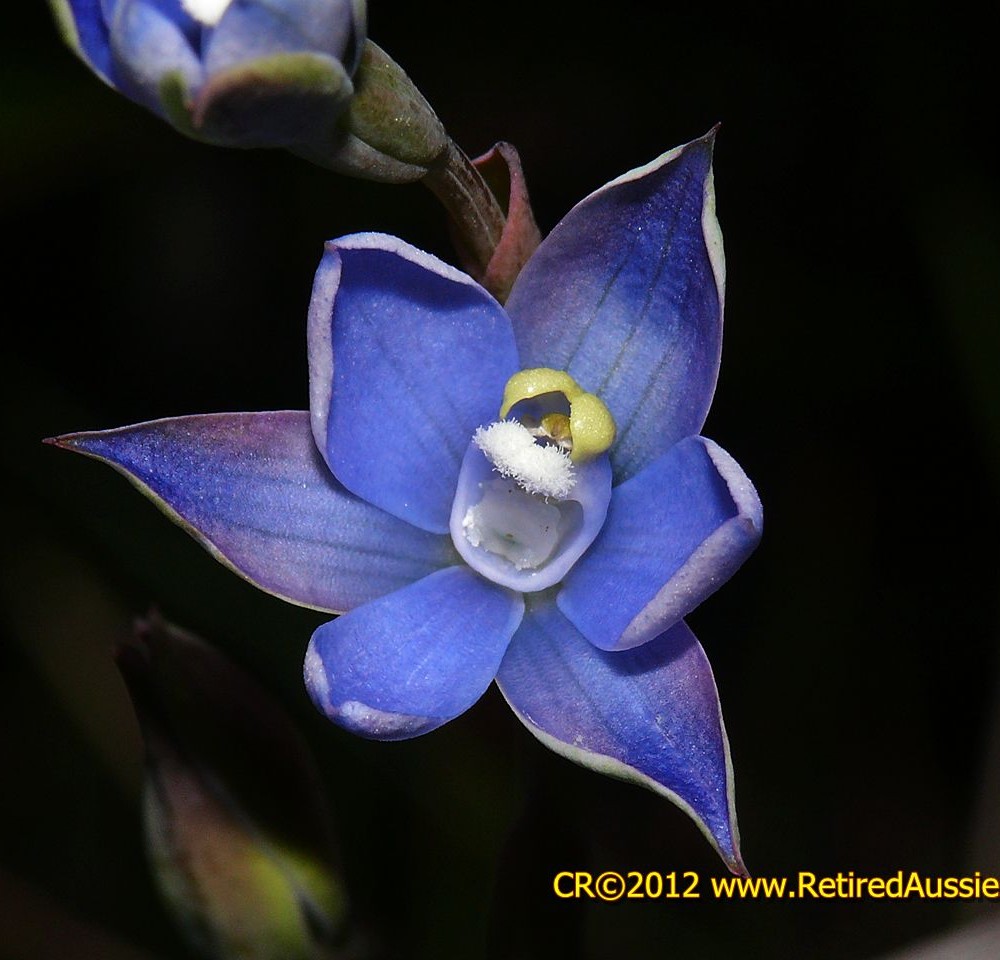Scarp sun orchid
(Thelymitra frenchii)

Description
Thelymitra frenchii, commonly called the scarp sun orchid or Jarrahdale sun orchid, is a species of orchid in the family Orchidaceae and endemic to a small area in the south-west of Western Australia. It has a single long, fleshy leaf and up to three relatively small, blue flowers. Thelymitra frenchii is a tuberous, perennial herb with a single channelled, fleshy, pale green, linear to lance-shaped leaf 60–120 mm (2–5 in) long and 5–12 mm (0.2–0.5 in) wide. Up to three blue flowers, 18–25 mm (0.7–1 in) wide are borne on a flowering stem 50–140 mm (2–6 in) tall. The sepals and petals are 8–12 mm (0.3–0.5 in) long and 3.5–6 mm (0.1–0.2 in) wide. The column is bluish to pinkish, about 5 mm (0.2 in) long and 3 mm (0.1 in) wide. The lobe on the top of the anther is 2–3 mm (0.08–0.1 in) long and about 2 mm (0.08 in) wide, mostly yellow with a narrow purplish band and a broad, shallow notch. The side lobes have toothbrush-like tufts of white hairs. The flowers remain open even in cool weather and until late in the day. Flowering has only been observed in October. Thelymitra frenchii was first formally described in 2004 by Jeff Jeanes from a specimen collected near Jarrahdale and the description was published in Muelleria. The specific epithet (frenchii) honours "Christopher (Chris) J. French" for his assistance to the author. The scarp sun orchid grows in soil pockets on granite outcrops in jarrah forest. It is only known from near Jarrahdale in the Jarrah Forest biogeographic region. Thelymitra frenchii is classified as "not threatened" by the Western Australian Government Department of Parks and Wildlife. Thelymitra, commonly known as sun orchids, is a genus of more than 100 species of plants in the orchid family, Orchidaceae. Unlike most other orchids, sun orchids lack a highly modified labellum and all three petals are similar in size, shape and colour. The column is, however, highly modified and usually has prominent wings or glands which are helpful in identifying the species. Most sun orchids close their flowers at night, in cloudy or cool weather, giving rise to their common name. The scientific name means "woman's hood" and refers to the hooded column present in most, but not all species. Most species are endemic to Australia although some are found as far from there as the Philippines and Indonesia.
Taxonomic tree:







